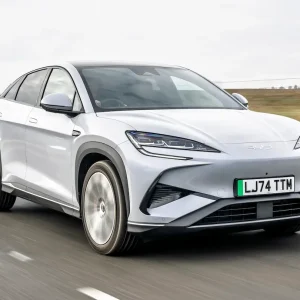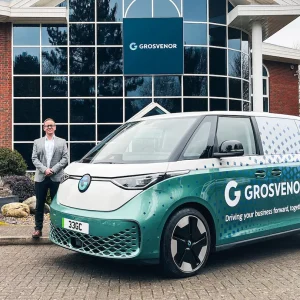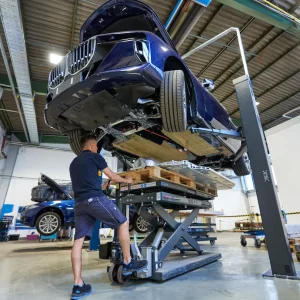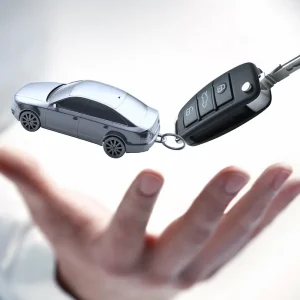The days when you could efficiently run a fleet on the list price or lease rate of your vehicles are long gone. The P11D or monthly lease cost are usually the first places most operators will look before procurement, and they’re the figures most likely to make them baulk if they’re too high, but they’re far from the be all and end all.
That’s where whole-life costs come in. They’re widely considered to be the most effective way of choosing cars for a fleet because they take into account just about every granular expense a business can expect to encounter when running a particular vehicle. Residual values, fuel, SMR and insurance, among others, all have a massive impact on how much a vehicle actually costs over the time a fleet is running it.
Choose by P11D alone and you’re only factoring in one expense, so you may well end up shelling out more in the long run. Make a decision based on whole-life costs and you get the bigger picture – and you may end up with a very different but much more appropriate and far less expensive result.
The second of BusinessCar and Hyundai’s exclusive round table events discussed whole-life costs in detail: what they’re all about, how fleets can use them and where the big savings can be made. A team of the most experienced experts in the field gathered at the Royal College of Nursing in central London, and BusinessCar’s special report details the crucial points of that meeting.
How important are whole-life costs?
BusinessCar editor Paul Barker kicked off the session by asking attendees how important they thought whole-life costs were to fleets.
KeeResources’ Mark Jowsey described them as “crucial”. “I’m a fleet guy and I was a user of our [KeeResources’] software before I joined the operation. When I came into our organisation some years ago it was with a mind set that it’s extremely important to make purchasing fleet decisions based on more criteria than just invoice price or, in the case of contract hire, monthly rental.
“And that still applies today. Whole-life cost is, in my mind, a crucial tool. You can apply the same to private individuals as well. That said, although I think whole-life cost is important, it has to be balanced with the other criteria that are important to the business.”
Lex Autolease’s Chris Chandler argued that the majority of a fleet’s running costs fall outside the lease or purchase price: “More and more costs associated to company cars lie outside the rental rate, so a pure list-price solution isn’t much of a solution these days.
“Whole-life costs are the key to be able to a) control costs and b) de-risk choice lists. Lots of people are automatically selecting low-emissions vehicles, but you do get people who want something different.
“People understand the concept [of whole-life costs], but where the understanding is lacking is where you act. Create a policy, and where you actually get the savings is on the choice list.”
Kwik-Fit’s Martin Towers agreed that a lack of understanding in this area was the biggest problem for businesses: “All fleets start out with this wonderful idea of buying the best, but somewhere along the line that gets lost. They go back to buying the way they used to. We need to get that understanding [of whole-life costs].”
The hidden expense of running a fleet
KeeResources’ Mark Jowsey explained that a lot of the expenses involved in running business cars have historically slipped through the net because operators don’t recognise them.
“When I first came to whole-life cost, what fascinated me was that, in those days, talking to manufacturers, they’d tend to talk in terms of depreciation, SMR and fuel – and that was about it.
“But in my early days talking to fleet operators, it was a case of ‘what are you including and why?’ and ‘why are you only including those three elements?’. Persuading people to put National Insurance in at that time was a real uphill struggle. In a lot of cases, nobody ever turned up in a fleet manager’s office and said ‘can you sign off this NI?’. It’s nicely hidden away in payroll.”
He concluded that such omissions still go on today: “That still continues in a lot of areas and these things don’t get perhaps the focus they deserve.”
The good, the bad and the costly: the difference between frugal fleets and the ones spending too much
There’s a big gap between the good fleets and the bad fleets in terms of how much they’re spending and on what. Lex Autolease’s Chris Chandler reckons it’s down to risk mitigation.
“Five or 10 years ago, people were using whole-life costs to reduce cost. So you’d go in, you’d do the whole-life cost analysis and you would bring about reduced costs to that organisation. The idea was always to try and improve popular choice: maintain the most popular vehicles and drive down cost at the same time.
“Now what happens is where more employees look at their company car and the tax associated with it, the majority are actually making the right decision, so I don’t see whole-life costs so much as a cost reduction as risk control.
“You could have quite a good allocation and get a nice, efficient executive car, but where the policy allows, they might be able to have a cheaper performance vehicle that’s going to have high CO2, higher insurance costs, higher maintenance costs – and those are the vehicles you’re trying to keep out of your policy. So it’s more a case of risk mitigation than driving down your costs.”
Healthcare at Home’s fleet administrator Georgina Smith said driver training was the answer for an easy and professional way of cutting expenses: “We’ve used driver training to drive down costs. Insurance costs have come down, or at least not gone up, with our fleet size increasing by using driver training. We’ve also seen our SMRs come down because of the lower accident rates that come with it.”
Easy ways to save cash
BusinessCar editor Paul Barker asked attendees for the “easy wins” associated with whole-life costs, to which KeeResources’ Mark Jowsey responded immediately with: “Writing down allowance – the impact of low-CO2 product and rental disallowance.”
He cited an example of an employee who had chosen a car with a 2.2-litre diesel engine: “The way [the company] deals with reimbursement and private mileage meant his costs actually went up overnight compared with the 2.0-litre product he was previously driving – and he wasn’t aware of that.”
Lex Autolease’s Chandler described the 130g/km lease rental restriction as “sudden death” for costs as soon as a fleet exceeds it. “The second you go over that, 15% of the finance is lost and you can’t recover it.”
He added that correct analysis of fuel was a vital way to make money go further: “It all depends on how you do your fuel. We’ll go to a customer and we’ll ask ‘right, what’s your fuel policy?’ because people sometimes calculate fuel at the official mpg for business mileage they do – if it’s a fully expensed fleet they’ll do it by the entire fuel bill, if the fleet is sensitive to the fact that typically drivers will not get the official mpg then [they] add the EST, now HMRC, 15% levy on that.
“It’s important when there are elements such as that that you don’t overlook these things from a whole-life cost perspective. Whole-life costs should reflect as closely as possible what that customer is doing.”
Which expense is the easiest to control?
When asked to name the element of fleet costs that is easiest to control, Kwik-Fit’s Martin Towers said: “It’s got to be SMR”.
He continued: “Leasing companies are now placing work in different areas. To get maintenance done the cheapest way, you will need to be taking a vehicle more often to a service agent. There is that kind of balancing act a fleet has to go through.
“I still think there are different factors to what the driver needs, what the fleet needs and what the leasing firm needs. From a driver perspective, he’s paying the same [lease] rate regardless of whether it’s an independent or a franchised dealership that’s doing the work.”
Hyundai fleet boss Martin Wilson said the firm was working towards longer service intervals for this reason: “With SMR, we’re looking at going down to 20,000 miles and two years.”
Lex Autolease’s Chris Chandler said his firm has, over time, developed a large list detailing which vehicles are the most likely to suffer from wear and so cost the operator more in the long run.
“Risks are down to things like predictability of maintenance. We’ve built up a massive database, which shows which cars chew through brake pads, tyres etc. We tie up a vehicle’s price and running costs in the rental based on the information we have. However, when you start getting some quite niche vehicles on board then that gets harder.”
KeeResources’ Mark Jowsey made the point that larger fleets are more at the mercy of SMR and the costs attached to it: “There is inevitably a task with fleet size. Once you get to a certain size you are more sensitive to the costs attached.”
Chandler added that an updated policy is essential to keep SMR and overall costs down. “It’s pretty much about ensuring you use that data to build the right kind of allocation policy,” he said. “A lot of the time a fleet is a subservient part of a business and a lot of the time a company will grow and the fleet policy gets left behind. More of a minority are the actual fleet operators who will then. include all the costs.”
All mod cons: is modern safety technology worth it and can it save you money?
Autonomous emergency braking (AEB) systems, which automatically apply the brakes to avoid low-speed accidents, are becoming increasingly popular on new vehicles and have been recognised by safety bodies such as Thatcham as having a positive influence on accident rates. This, in turn, has had a knock-on effect on insurance premiums (they’re now lower for cars fitted with AEB systems as standard) and residual values, so they’re a positive development for costs as well as safety.
BusinessCar editor Paul Barker asked attendees when AEBs and other advanced safety systems would become “the next ABS” and be the norm on fleet vehicles for both cost and risk benefits.
Lex Autolease’s Chris Chandler questioned the benefit of such devices and whether they would realistically boot used values: “When I did RVs, [an item of specification] didn’t add anything to your RVs if you needed a £150 disc to update it. That’s what a lot of fleets are asking for now – if it’s got something like AEB then will a buyer know it’s got it at auction?
Rupert Pontin of Glass’s argued that such safety systems do add value to used cars: “Yes, it will [make the car worth more], but that will fade over time as these things become standard. Certain items will become critical and buzz options because they’ve been made out to be.”
KeeResources’ Mark Jowsey cited an example of a pharmaceutical company that bought into safety technology and saved a bundle.
“[The] company [had] reps parking in hospital car parks,” he said. “They specced all the cars with parking sensors and in the second year they reckoned they’d saved three times what they paid for them [in reduced repair costs].”
Hyundai’s fleet boss Martin Wilson claimed large, public sector organisations were likely to buy into such technology.
“Some larger public sector operations are more inclined to spec safety features as standard. Most have certain things on the car and think that’s going to become more prevalent. Bluetooth is a given now and it’s still a key area. All these types of things are becoming more accepted.”
Despite the benefits, attendees also expressed concerns about the amount of standard equipment – not only safety kit – fitted to modern vehicles and how it can have a detrimental effect in some cases. They cited the grey areas caused by standard Bluetooth hands-free phone systems versus company policies and the increasing cost of repairs due to the fitment of more sophisticated systems.
Pontin highlighted the increased potential for higher SMR costs as a result of extra technology in cars: “There are incidences where a vehicle has been damaged, and while it’s waiting for repair a window has been left open. Then water damage from the rain has caused subsequent damage to the interior and that has then caused electrical damage, which has written the car off.”
Tyres: which ones, how much and why?
BusinessCar editor Paul Barker asked attendees about low rolling-resistance tyres, which are said to increase fuel economy, and if there was a danger of their impact being lessened if fleets were to replace them with standard or lower-quality rubber to save on SMR costs.
Kwik-Fit’s Martin Towers said: “It’s wrong to say people are moving away from premium brand tyres. The vast majority of tyres we sell into the fleet arena will be premium, and mid-range brands are growing. Budget is still very much a retail product, so it’s wrong to say that’s happening.
“Are we changing like for like? No we’re not, but that’s economics that are driving [those decisions], whether it be relationships with the manufacturers or just purely for an invoice price, but [fleets] tend to stay within the premium brand marketplace.”
He continued: “We’ve certainly seen on vehicles such as Efficient Dynamics BMWs, for example, customers are buying them for specific reasons and are very keen to have the right tyres replaced onto those vehicles as well, so we are seeing that there is a growing market for what we would call energy tyres.
“It’s difficult to buy a bad tyre, that’s the reality of it. And it’s difficult to weigh up the benefits of a premium, mid-range or budget tyre when, from a whole-life cost perspective, the right foot of the driver is still very much the biggest factor in all of that.”
What’s next for whole-life costs?
When asked about developments for whole-life costs, KeeResources’ Mark Jowsey said his firm had software in development to analyse more elements that affect vehicle running costs.
“There is far more emphasis on the impact of writing-down allowances. We’ve got journey cycling, which allows you to look at alternative powertrains in the context of a particular driver. I think that’s the next step required because it’s getting more complicated all the time.”
Lex Autolease’s Chris Chandler raised the issue of the requirement for whole-life costs to develop and differentiate between the perceived and actual benefits of alternative-fuel vehicles.
“Where we are now and where whole-life cost is becoming more important and more complex is with some of the new vehicle technologies. Electric is quite easy at the moment – zero tax, so it’s your rental rate and it’s something like 3p per mile for your electric, so that’s not too difficult.
“What gets complicated is when you’ve effectively got dual fuel – range-extenders like the [Vauxhall] Ampera, that can do 40 miles on pure electric. The person that’s using that vehicle: are they doing a daily commute that’s 40 miles or is it 80 miles and they can charge it at work, which is 90% of their driving? That would making it 90% at 3p per mile and then the other 10% would have the range-extender coming in at 40mpg. Or have they taken a range-extender because they want 5% BIK and they’re running around doing 40mpg all the time?
“Fleets may be on a whole-life cost policy, but until you ask these questions and work out how the vehicles are being used, it’s hard to tell.
“When the tax starts coming in on electric vehicles – which it will because the chancellor needs to balance his books – that’s when whole-life costs will become increasingly important.”
Telematics: a cost-cutting technique or more trouble than it’s worth?
Editor Paul Barker quizzed attendees on telematics systems and whether the resultant cost savings were worth the initial outlay or if it they were simply an expensive, troublesome measure.
Hyundai’s fleet boss Martin Wilson said: “It depends on the fleet it’s needed for. For workhorse fleets, absolutely, but for the perk driver who parks his car at the office every day, why would you?”
Lex Autolease’s Chris Chandler agreed: “You can take the shine off it [the perk] with something like that.”
He continued: “An issue I regularly have is the term ‘telematics’. It’s very broad. Are you talking about live tracking? Are you talking about getting a record every month that flags up drivers etc?
“Are you using it to deploy vehicles effectively? If you’re a supermarket and one of your refrigeration vehicles breaks down, then you’ve got something like an hour to get an engineer on site and repair that vehicle before you lose all your stock, so you’d be mad not to have it. If you’ve got drivers with very expensive and dangerous petrochemical vehicles, you’re probably going to want to see what’s going on with them.
“Moving down the ranks, when you start getting to the average fleet driver, you need to consider whether it’s necessary.”





